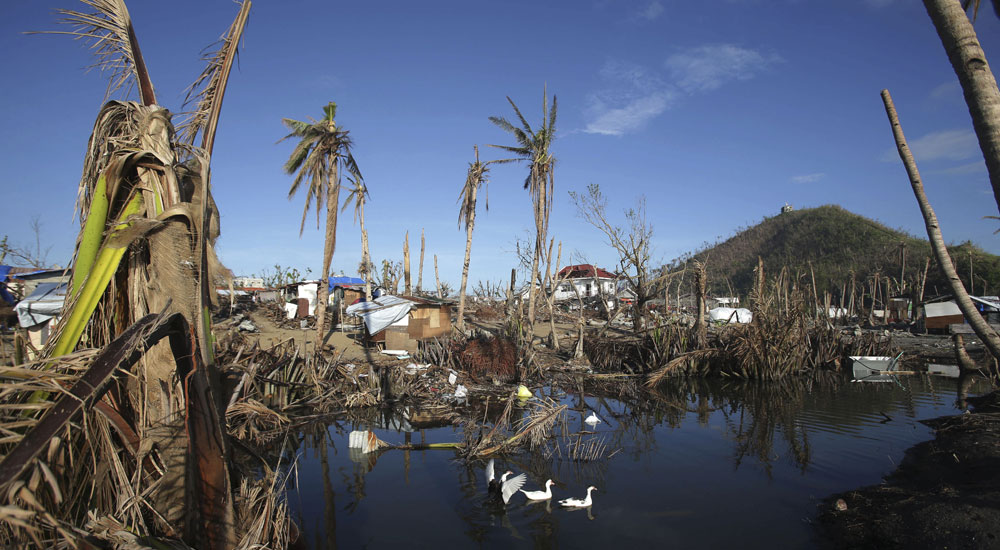
Ducks swim beside damaged homes and trees at typhoon-ravaged Tolosa town, Leyte province, on Monday, Dec. 9, 2013. The Philippine Chamber of Commerce and Industry expects the economy’s growth to slow down to about 6 to 6.5 percent this year, stunted largely by the calamities that struck the Visayas in the second half of this year. AP
MANILA, Philippines—The Philippine Chamber of Commerce and Industry, the country’s largest business organization, expects the economy’s growth to slow down to about 6 to 6.5 percent this year, stunted largely by the calamities that struck the Visayas in the second half of this year.
Citing economists’ projections, PCCI president Miguel B. Varela said they also expect growth in fourth quarter gross domestic product growth at about 5.5 percent, which will spill over to the first quarter of next year.
“On a positive note, full-scale reconstruction—rebuilding of transport infrastructure, schools and hospital, residential and commercial dwellings—will require massive public and even private spending and should boost GDP growth from the second quarter onwards next year,” Varela said in a briefing on Thursday.
But while the economy is riding high at the moment with about 7 percent growth in GDP over the last five quarters, “decisive action is needed to keep the momentum going.”
PCCI vice chair Donald Dee was, however, quick to debunk news that the growth being experienced by the Philippines may just be a “bubble.” He admitted though that the country’s growth, as it is consumer spending-based, is “shallow.”
“International development partners like the Asian Development Bank and the World Bank have observed that the growth we had been experiencing has not really translated to quality and better jobs. Our growth has been consumption- rather than more sustainable investment-driven. OFW remittances and services have been the main drivers of our growth,” Varela added.
“If we are to provide jobs for the greater number, we must strengthen our manufacturing industry; and if we are to develop the rural areas into new centers of development and excellence, we must promote agriculture and business,” he further said.
According to Varela, the various industry roadmaps are seen as critical in moving forward a globally competitive manufacturing industry with strong forward and backwards linkages. These road maps provide direction, focus and framework in achieving targets set by the private sector.—Amy R. Remo